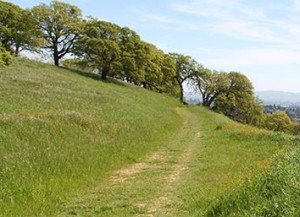A visit to the John Muir Historic Site is a must visit for anyone visiting the San Francisco Bay Area. Many of San Francisco’s attractions are located on it’s peninsula or across the Golden Gate Bridge in Marin County. The John Muir Historic Site is located in Martinez, California, about a 36 mile drive to the east and northeast of the city. To drive there will take a special effort but the drive is very well worth the time.
Thank you for reading this post, don't forget to subscribe!
Directions from San Francisco is as follows : Eastbound I-80 (Oakland – San Francisco Bay Bridge) to eastbound Highway 4. Exit at Alhambra Avenue, turning left at bottom of the ramp. Cross beneath highway. The park is immediately on your left.
At one point in his life, John Muir lived in Martinez, California and worked as a farmer. Some may not be aware of this fact since Muir is best known as being a preservationist and the founder of the Sierra Club. Muir was born in 1838 in Dunbar Scotland and migrated with his family to Wisconsin in 1849.
The John Muir National Historic Site is located in Martinez, whose land at one time was part of a large land grant doled out by the Spaniards and Mexicans. Large land grants were awarded throughout the Spanish and Mexican ruled territory. The original Martinez land grant covered some 17,000 acres and reach as far as the San Francisco Bay.

Dr. John Strentzel
Dr. John Strentzel, a noted horticulturist in Alhambra Valley, near Martinez and father-in-law of John Muir. was the owner and builder, in 1882, of the Victorian Italianate mansion which you can now tour. Later, this mansion served as the home of John Muir.
When the Strentzels resided in the mansion, John Muir and his wife resided in a Dutch Colonial home about a mile from the mansion. Muir was very active in his father in-law’s fruit orchard. When Dr. Strenzel passed away in 1890, the Muirs moved into the larger home.
This land in the Alhambra Valley was utilized as orchards. This small area of northern California had an ideal climate for orchards. Industry came to the area about the time of Muir’s death in 1914. This really marked the start of the decline of the orchard industry. California grew very fast during the mid to latter half of the twentieth century and the land increased greatly in value. As a result, much of the orchard land was sold to make way for development. What were once orchards is now dotted with homes, a story familiar to most of the area east of San Francisco and Oakland.
The Mansion
When John Muir died in 1914, his wife had passed away previous to that time, the original furniture from the mansion was removed by Muir’s two daughters. The National Park Service, with the help of Muir’s daughter Helen, refurnished the home with period furniture.
Washington palms are on both sides of the mansions entrance. These are members of the only native species in California. There is also a Canary Island palm that grows next to the Muir house.
Touring the Muir Home
The first thing you want to do when visiting this historic site is to begin at the visitor center and watch the twenty minute film.
The Muir Home tour will show you the West Parlor (the formal parlor) , the Library, the Kitchen and Dining Room, the East Parlor and the Hall and Upstairs area. The second floor contains a series of bedrooms including that of John Muir’s, bathrooms and Muir’s Study and Study Annex.
You may also enjoy the Trips Into History articles on the links below…
A Visit to San Francisco’s Telegraph Hill
Visit Old Town Sacramento / The Steamboats
California and the Old Spanish Missions
The Adobe Structure
There is an adobe structure on the property. This adobe structure was built on the property in 1849 by Don Vicente Martinez, the son of the commandante of the Presidio of San Francisco. The adobe which you can see today was never lived in by John Muir and his wife but was the home at one time of Muir’s eldest daughter Wanda and her husband.

Touring the Grounds
When you follow the trail through the historic site, in addition to the Muir Home and the Martinez Adobe, there is plenty to see. The three separate areas include the Victorian garden, the orchard and the natural area by Franklin Creek. There is a self cell phone tour of the grounds. You may also wish to explore the hills where John Muir hiked with his two daughters. Mount Wanda is open daily sunrise to sunset and many enjoy picnics on this hill. Seasonal wildflower walks, camp fire programs, bird walks and full moon walks are available on Mt. Wanda. The visitor center will have information on all activities.
(Article and photos copyright 2015 Trips Into History)
